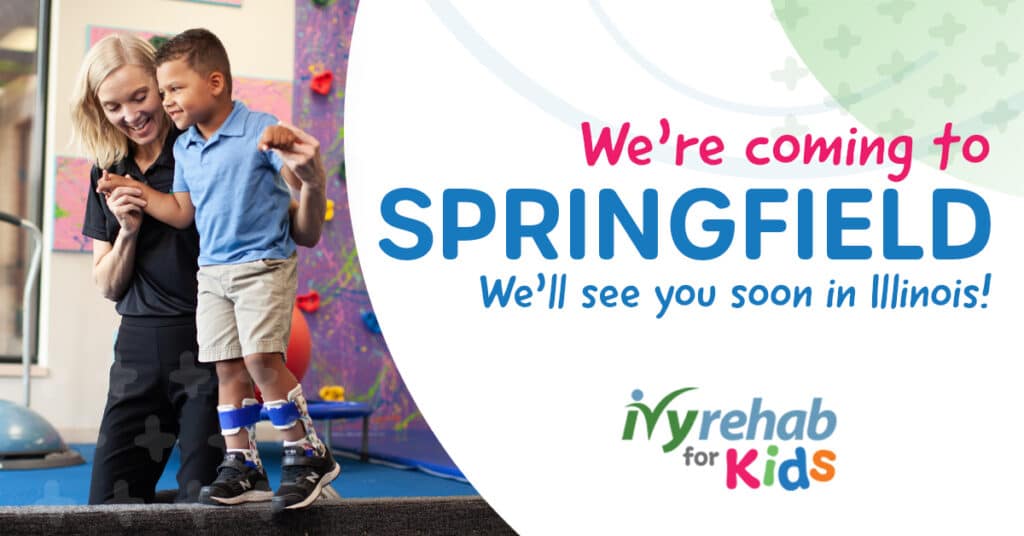A developmental disability may be more common than you might think. One in six children, or 15%, have a developmental disability or delay. While many children have a developmental disability or delay, there is an increasing understanding of how to help. Let’s look at and what can be done to help.
Developmental Domains
When it comes to and learning, there are different domains in which a child experiences growth. These five developmental domains that we look at in children are:
- Communication
- Social-emotional
- Cognitive
- Adaptive
- Physical development
When looked at together, these areas give us information about how a child functions throughout the day.
- Communication: How a child expresses themselves (talking, facial expressions, signs, etc.) and understands what is being communicated to them.
- Social-emotional development: It looks at relationships with others and understanding of feelings.
- Cognitive development: This involves how a child understands, thinks, and figures out the world. For children, this is easiest to assess and address through play.
- Adaptive development: It looks at daily routines and a child’s participation and independence in feeding, dressing, hygiene, sleep routines, and community engagement. This also looks at sensory processing and regulation, or the child’s ability to remain calm with different things happening in the environment.
- Physical development: This is how the body moves, how strong muscles are, and coordination. This is for every muscle in the body, including the big ones that help us walk and run and the small ones that help us coordinate our eyes, mouths for chewing, or hands for writing.
What are the 5 categories of developmental disabilities?
There are also different types of developmental disabilities that can impact a child’s and growth. The five categories of developmental disabilities include:
- Intellectual
- Neurological
- Sensory
- Degenerative
- Metabolic
What are the most common developmental disabilities?
Intellectual and developmental disabilities
Intellectual and developmental disabilities (IDDs) pertain to a specific range of scores on an IQ (intelligence quotient). An intellectual disability is a common developmental disability, often caused by syndromes or mental disorders that a child is born with. To know if your child has any of these, they will have to go through a developmental screening.
Neurological developmental disabilities
Neurological developmental disabilities include any condition that affects brain growth and development. This category consists of the commonly known and talked about Autism Spectrum Disorder, which is currently diagnosed in 1 in 88 children in the United States. Other common neurodevelopmental disorders include ADHD), communication, and learning disorders.
Sensory developmental disabilities
Sensory developmental disabilities affect our eight senses. Commonly known senses include vision include:
- Hearing
- Taste
- Smell
- Touch
Three lesser-known senses include:
- Proprioceptive sense – our body’s awareness and ability to know where our body is in space
- Vestibular sense – how we sense movement through our head position
- Interoceptive sense – our sense of bodily functions like hunger, thirst, and need to go to the bathroom
Common diagnoses in this category include Sensory Processing Disorder, low vision/blindness, and deafness/hearing loss.
Degenerative developmental disabilities
Degenerative developmental disabilities are categorized by conditions that cause a loss or breakdown of function over time. Children with a neurodevelopmental disorder may appear to develop normally at birth or in early childhood but start to lose function as they grow.
Metabolic developmental disabilities
Metabolic developmental disabilities affect metabolism or the chemical reactions in the body that help humans make energy and maintain life. These conditions are typically inherited and range in various symptoms and severities.
What are the 5 Developmental Disabilities?
While there are many different types of developmental disabilities that can be diagnosed, the 5 most common include:
1. Intellectual Disability
Intellectual disability pertains to notable limitations in both intellectual functioning and adaptive behavior. This means individuals might face challenges in areas such as learning, reasoning, problem-solving, practical, and social skills.
2. Autism Spectrum Disorder (ASD)
Autism Spectrum Disorder is characterized by social, communication, and behavioral challenges. While the symptoms can range from mild to severe, the need for early intervention and tailored care is paramount.
3. Fragile X Syndrome
Fragile X Syndrome is caused by a mutation in the FMR1 gene, leading to a deficiency in a crucial protein that impacts brain development and function, resulting in intellectual and behavioral challenges. Individuals with Fragile X syndrome often exhibit delays in cognitive abilities, social interactions, and communication skills, affecting their overall development.
4. Cerebral Palsy
Cerebral Palsy primarily affects a person’s ability to move and maintain balance and posture. It results from abnormal brain development or damage to the developing brain that impacts a person’s ability to use and control their muscles.
5. Attention Deficit Hyperactivity Disorder (ADHD)
While more commonly known as a behavioral disorder, ADHD has its roots in the neurodevelopmental domain. Individuals with ADHD might exhibit symptoms like impulsiveness, difficulty staying focused, and hyperactivity.
More common, however, is a developmental delay. There are a variety of reasons a child may have a developmental delay.
In some cases, children may need extra help or a gentle push in the right direction to learn necessary skills that will set them up for success in school, sports, and daily routines. Other times, a medical reason, social circumstance, or life event can cause a developmental delay. Seeking intervention is crucial so that the child can reach their full potential.
Is ADHD a developmental disability?
Attention Deficit Hyperactivity Disorder is considered a developmental disability. It is one of the most common neurodevelopmental disorders.
There are three types of ADHD including:
- Predominantly Inattentive Presentation, where a child has difficulty with attention, ability to organize/finish tasks, or following conversations or instructions. Forgetfulness and distractibility are common in this type of developmental disorder.
- Predominantly Hyperactive-Impulsive Presentation, which typically looks like a child who talks a lot, fidgets, runs, climbs a lot, and may get hurt/have accidents more often. It’s hard for someone with ADHD to take turns or listen, which can also cause difficulty in social situations like school or extracurricular activities.
- Combined Presentation where symptoms from both first two types are equally present. Treatment of ADHD includes a close relationship with your doctor, parent training, a healthy, balanced lifestyle, and specialized therapy as needed.
Pediatric therapy can help
While developmental disorder or delay is believed to be a common developmental disability amongst young children, early intervention can be vital. Pediatric therapy is vital for children with developmental disabilities. Different types of pediatric therapy include Occupational, Physical, Speech/Language, Feeding, and Developmental Therapy. All these therapies are designed to address the five developmental domains listed above.
- Occupational Therapy addresses fine motor skills, the child’s ability to participate in and gain independence in daily routines, and sensory processing.
- Physical Therapy targets larger muscle groups for walking, running, jumping, balance, and strength.
- Speech Therapy addresses language developmental milestones, or the ability to communicate verbally and non-verbally, as well as understand what is being communicated to the child.
- Feeding Therapy helps with picky eaters, late eaters, and the child’s ability to chew or swallow food.
- Developmental Therapy looks at all five developmental domains and is typically part of the Early Intervention program and is less common in outpatient clinics.
Finding the right combination of services for your child’s specific needs is important. It all starts with an initial evaluation or developmental screening, which can show which types of therapy may be beneficial for your child. At Ivy Rehab, we offer a multidisciplinary approach that allows for the necessary therapy programs to work together. Timeliness is important, so if you think we may be able to help your family, find the location nearest you and request an appointment online. For additional resources, check out our therapy and treatment options.
Article By: Emily Murray, MOT, OTR/L
Emily began their Occupational Therapy career three years ago. Emily loves working with the pediatric population and believes in the importance of providing fun, meaningful activities to help children improve their skills, confidence, and regulation. Emily enjoys working with children of all abilities to reach their full potential and move through their days as easily as possible. She currently treats patients at Little Steps Pediatric Therapy in Glenview, IL.





